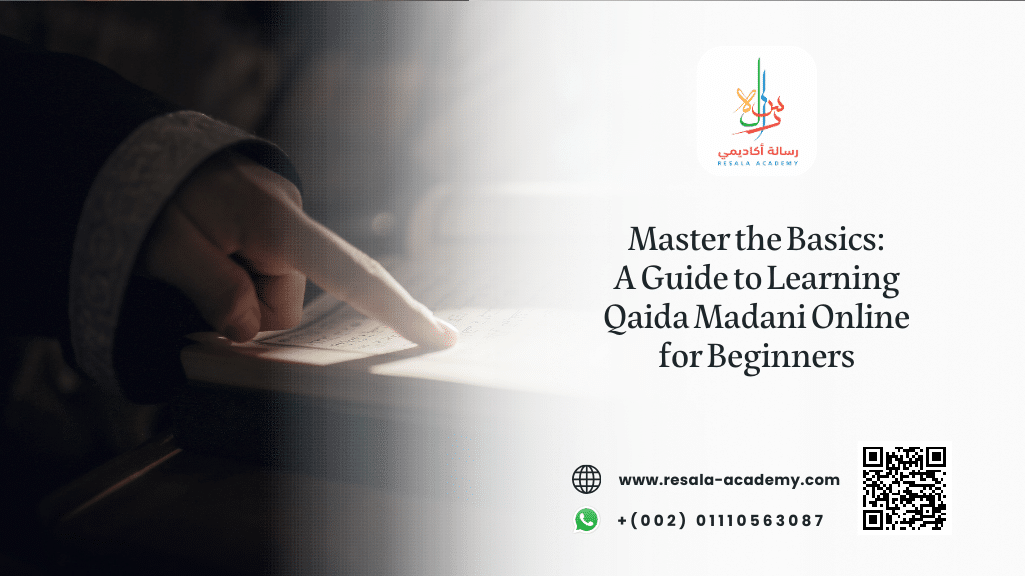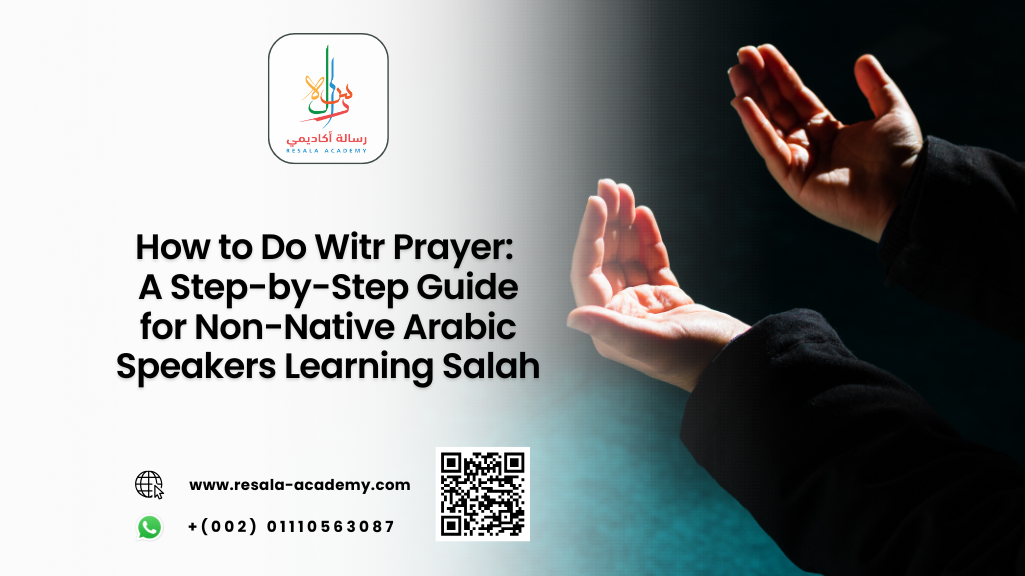Table of Contents
Tajweed for Children 101: Fun Activities and Games to Enhance Quran Recitation
Welcome to the enchanting world of Tajweed for Children! As parents and educators, we all want our little ones to have a deep connection with the Quran, understanding its divine message and reciting it with beauty and precision. And that’s where Tajweed comes in – the art of proper pronunciation and intonation in Quranic recitation.
But teaching Tajweed to children doesn’t have to be a daunting task. It can be a fun-filled journey filled with exciting activities and games that not only enhance their Quranic recitation skills but also make learning an enjoyable experience.
In this blog post, we will explore the importance of Tajweed for Children, provide an overview of its rules tailored specifically for children, discuss different types of Tajweed, share some practical tips on teaching this sacred art to your little ones, and introduce you to some fantastic activities and games that will take their recitation skills to new heights.
So get ready for an adventure as we delve into the world of Tajweed for Children – where learning becomes playtime and every word is infused with love and reverence. Let’s embark on this journey together!
Importance of Tajweed for Children
The importance of Tajweed for Children cannot be overstated. It lays the foundation for a strong relationship with the Quran, allowing children to recite it accurately and connect with its profound meanings. Tajweed ensures that every word is pronounced correctly, every letter is enunciated beautifully, and every verse is recited in a melodious manner.
By learning Tajweed, children develop a deep appreciation for the beauty and precision of the Arabic language. They become aware of the intricate rules and nuances that govern Quranic recitation, instilling in them a sense of discipline and respect for this sacred text. Additionally, proper Tajweed improves their pronunciation skills in general, enhancing their overall communication abilities.
Moreover, mastering Tajweed empowers children to confidently recite verses from the Quran during prayer or public gatherings. It gives them a sense of pride and accomplishment as they share the divine message with others. With each correct intonation and precise articulation, they not only honor Allah’s words but also inspire those around them with their devotion to perfecting their recitation skills.
In conclusion, teaching Tajweed to kids helps cultivate an intimate connection between them and the Quran while fostering essential linguistic skills. So let’s dive into exploring some practical tips on how to introduce this beautiful art form to our little ones!
Overview of Tajweed Rules for Children
Tajweed is the art of reciting the Quran with proper pronunciation and intonation. It ensures that every letter and word is pronounced correctly, allowing children to connect deeply with the words of Allah.
There are several key rules in Tajweed that children should learn. They need to understand the correct articulation points of each Arabic letter. This includes knowing how to pronounce letters from different parts of their vocal tract like throat, tongue, lips, etc.
Children should learn about elongation or “Madd” which involves stretching specific vowels for a certain duration while reciting Quranic verses.
Tajweed teaches children about proper pronunciation when encountering different types of letters such as heavy or light letters and silent letters (sukun).
By understanding these basic rules of Tajweed, children will be able to recite the Quran confidently and accurately. They will also develop a deep connection with the words of Allah as they master this beautiful art form.
Different Types of Tajweed
When it comes to the art of reciting the Quran, Tajweed plays a crucial role. But did you know that there are different types of Tajweed? Each type focuses on specific aspects of pronunciation and intonation, enhancing the beauty and clarity of the recitation.
The first type is called “Isti’adhah” or seeking refuge in Allah at the beginning of Surahs. This teaches children to seek protection from evil before delving into the verses. It sets a strong foundation for their understanding and connection with the words they recite.
Another important aspect is “Makharij al-Huruf,” which refers to articulation points. Children learn how different letters are pronounced using specific parts of their mouths, such as lips, tongue, teeth, or throat. By mastering these sounds, they can accurately convey each letter’s unique characteristics while reciting.
We have “Sifaat al-Huroof,” which highlights the attributes or qualities associated with certain letters. For example, some letters require elongation (madd), while others need emphasis (tashdeed). These nuances add depth and richness to children’s recitation skills.
By exploring these different types of Tajweed alongside traditional rules, children not only improve their Quranic knowledge but also develop a deeper appreciation for this divine art form! So let’s encourage our little ones to explore all facets of Tajweed as they embark on this beautiful journey towards spiritual growth.
How Many Rules Are There in Tajweed?
Tajweed is not just about reciting the Quran, it’s about doing it in a beautiful and melodious way that pleases both the ears and the heart. So how many rules are there in Tajweed? Well, let me tell you, there are quite a few! But don’t worry, they can be divided into different categories to make them easier to understand.
We have the rules of pronunciation or “Makharij al-Huruf.” These rules focus on correctly articulating each letter and ensuring that its sound comes from the right place in our mouths. Then we have the rules of elongation or “Madd,” which teach us how to prolong certain sounds at specific places in a word. There are other important rules like “Idgham,” which deals with merging two letters smoothly without any pause.
Now you might be thinking, wow, that sounds like a lot! And yes, it may seem overwhelming at first. But remember, learning Tajweed is not an overnight process—it takes time and practice. By breaking down these rules into smaller parts and introducing them gradually to children through interactive activities and games, they will develop their skills naturally and enjoyably.
So buckle up and get ready for an exciting journey into the world of Tajweed with your little ones!
Teaching Tajweed to Kids
Teaching Tajweed to kids can be a wonderful and rewarding experience. It’s important to approach it with creativity and enthusiasm to keep their attention and make the learning process fun. Here are some tips on how to effectively teach Tajweed to little ones.
Start by introducing the basics of Tajweed simply and engagingly. Use visual aids such as colorful diagrams or flashcards to help them understand the different rules of pronunciation. Incorporate interactive activities like role-playing or coloring exercises that focus on specific letters or sounds.
Make use of technology as a teaching tool. There are many apps, websites, and online resources available that offer interactive lessons and games designed specifically for children learning Tajweed. These digital tools can be an effective way to supplement traditional teaching methods and engage kids in a more interactive learning experience.
Create a positive learning environment where children feel comfortable asking questions and making mistakes. Encourage their progress through praise and rewards, such as stickers or small treats when they master certain rules or recitations correctly.
Remember, patience is key when teaching young children anything new, including Tajweed. By implementing these strategies with creativity and joy, you can help your little ones develop a strong foundation in Quran recitation while enjoying the process along the way!
5 Tips for Teaching Tajweed to Little Ones
Teaching Tajweed to little ones can be a fun and rewarding experience. Here are five tips to help you make the process more enjoyable and effective:
1. Start with the basics: Begin by introducing your child to the Arabic alphabet and basic pronunciation rules. Teach them how to properly articulate each letter, focusing on clarity and accuracy.
2. Use visual aids: Incorporate visual aids like flashcards or charts that illustrate the different symbols and sounds in Tajweed. This will help your child understand and remember the rules better.
3. Make it interactive: Engage your child in interactive activities such as games, quizzes, or role-playing exercises that involve reciting verses from the Quran while applying Tajweed rules correctly.
4. Practice regularly: Consistency is key when teaching Tajweed. Set aside dedicated time each day or week for practice sessions with your child. Encourage them to recite verses aloud, correcting any mistakes gently but firmly.
5. Provide positive reinforcement: Celebrate your child’s progress by offering praise, rewards, or small incentives whenever they demonstrate improvement in their Tajweed skills.
By following these tips, you can create a supportive learning environment that encourages children to develop proficiency in Tajweed while enjoying the process of Quran recitation!
Fun Activities and Games to Enhance Quran Recitation
Looking for creative ways to engage your little ones in learning Tajweed? Incorporating fun activities and games into their Quran recitation practice can make the learning process enjoyable and interactive. Here are some exciting ideas to enhance their understanding of Tajweed rules:
1. Treasure Hunt: Hide cards with different letters or words around the house or classroom. As your child finds each card, they must recite the corresponding verse correctly before moving on to find the next one.
2. Memory Matching Game: Create a set of flashcards with Arabic letters or words written in different colors. Shuffle them and place them face down. Encourage your child to flip over two cards at a time, trying to match pairs while reciting the associated verse.
3. Charades: Write down different Tajweed rules on separate pieces of paper and place them in a hat or bowl. Have your child pick a rule and act it out while the rest of the family or class tries to guess what it is.
4. Singing Competition: Divide children into teams and have each team come up with a melody for a specific verse from the Quran. Encourage them to apply Tajweed rules while singing and award points for accuracy and creativity.
5. Word Building: Provide children with letter magnets or blocks and have them build words from verses they have learned, focusing on proper pronunciation and intonation as they do so.
With these fun activities and games, you can make learning Tajweed an enjoyable experience for your little ones while also enhancing their Quran recitation skills.
Teaching Tajweed to children is not just about reciting the Quran correctly, it’s about instilling in them a deep love for this sacred text. By introducing them to this beautiful art form through interactive activities and games, we can help our little ones develop a strong connection with the Quran while building essential linguistic skills.
So let’s embark on this journey together, exploring all aspects of Tajweed with our kids as they discover the beauty, By infusing these fun activities into your child’s Quranic learning journey, you can foster their love for Tajweed while engagingly enhancing their pronunciation skills!
Benefits of Tajweed for Children
Tajweed is not just about reciting the Quran correctly; it offers numerous benefits for kids too! First and foremost, Tajweed helps children develop a deep connection with the Quran. By learning to recite with proper pronunciation, they understand the meaning of each word, verse, and chapter better. This leads to a stronger bond with their faith and instills a sense of spirituality from an early age.
Moreover, Tajweed enhances children’s communication skills. The precise articulation required in Tajweed trains them to enunciate each letter. This attentiveness carries over into their everyday speech, improving their diction and pronunciation in both Arabic and other languages.
Additionally, learning Tajweed improves concentration and focus in young minds. It requires attention to detail as well as memorization skills. Regular practice of Tajweed rules helps children sharpen their memory abilities while staying focused on the task at hand.
The benefits of teaching Tajweed to kids are immense! From fostering a strong connection with the Quran to enhancing communication skills and promoting concentration, incorporating Tajweed into your child’s learning journey can have lasting positive effects on their spiritual growth and overall development.
Overcoming Challenges in Teaching Tajweed
Teaching Tajweed to children can sometimes be a challenging task. As parents or teachers, we want our little ones to learn and master the rules of Quran recitation, but it’s not always easy. One of the challenges is getting kids to focus and sit still during lessons. Children are full of energy and easily distracted, making it hard for them to concentrate on learning something as intricate as Tajweed.
Another challenge is finding effective teaching methods that engage children and make learning fun. Traditional teaching methods might not always resonate with kids, who thrive on interactive activities and games. It’s important to find innovative ways to capture their attention and keep them motivated throughout their Tajweed journey.
Additionally, pronunciation can be a stumbling block when teaching Tajweed. Some Arabic sounds may be difficult for non-native speakers, especially young children who are still developing their language skills. Patience is key in helping them overcome these obstacles by providing consistent guidance and practice opportunities.
Overcoming these challenges requires creativity, patience, and adaptability from both parents/teachers and students alike. By incorporating interactive activities into lessons such as role-playing games or using visual aids like flashcards or videos, kids can have fun while learning Tajweed rules. Breaking down complex concepts into simpler terms also helps make it easier for children to understand.
By acknowledging the challenges in teaching Tajweed to children and finding creative solutions, we can pave the way for an enjoyable learning experience that enhances their Quran recitation skills.
Resala Academy Offers Online Tajweed Classes for Children
Resala Academy is here to make learning Tajweed fun and accessible for children of all ages. With our online classes, your little ones can enhance their Quran recitation skills from the comfort of their own homes.
In our interactive sessions, experienced teachers guide students through the intricacies of Tajweed using engaging activities and games. We believe that learning should be enjoyable, which is why we incorporate play-based methods to keep children actively involved in their learning journey.
Our online platform allows for flexible scheduling, ensuring that parents can find a time slot that works best for their child’s routine. Whether it’s early mornings or late evenings, Resala Academy is committed to accommodating your needs.
Join us at Resala Academy and give your child the opportunity to master the beautiful art of Tajweed with expert guidance and a supportive community. Enroll today and watch as your little one blossoms into a confident Quran reciter!
FAQs
1. How can I make learning Tajweed fun for my child?
Making learning enjoyable is crucial in keeping your child engaged. You can incorporate interactive activities, such as using colorful flashcards or playing games like “Tajweed Bingo” where they match rules with corresponding verses. By making it entertaining, your child will look forward to each lesson.
2. What age is suitable for starting Tajweed lessons?
It’s never too early to start teaching the basics of Tajweed! Even toddlers can learn simple rules like elongation and stopping correctly. However, a more structured approach is usually introduced around the ages of 6-8 when children have better cognitive abilities and attention spans.
3. Do I need to be an expert in Tajweed to teach my child?
No, you don’t have to be an expert in Tajweed yourself! It helps if you have a basic understanding of the rules, but there are plenty of resources available online or through Quran teachers who specialize in teaching young learners.
Conclusion
In a world filled with distractions and constant technological advancements, it is crucial to cultivate in our children the love for reciting the Quran with proper Tajweed. By understanding and implementing the rules of Tajweed, children can enhance their Quranic recitation and deepen their connection with Allah (SWT).
We have discussed the importance of Tajweed for Children and provided an overview of its rules. We explored different types of Tajweed and discovered how many rules there are in total. Teaching Tajweed to little ones may seem challenging at first, but with patience, consistency, and creativity, it can become an enjoyable journey.
To help you in this endeavor, we offered five tips for teaching Tajweed to your little ones. These practical suggestions will not only make learning fun but also facilitate their progress in grasping the intricacies of correct recitation.
Furthermore, we shared various exciting activities and games that can enhance Quranic recitation skills while keeping your child engaged and motivated. From using flashcards to playing online interactive games or even organizing friendly competitions among siblings or friends – there are endless possibilities to make learning Tajweed an adventure!
The benefits of mastering Tajweed extend beyond simply improving pronunciation; it helps children develop better focus, discipline, patience, and memorization skills – all while fostering a deeper connection with the words of Allah (SWT). It empowers them to understand the meanings behind each verse they recite.
Teaching Tajweed does come with challenges; however, these obstacles should not deter us from guiding our children on this beautiful path toward perfecting their relationship with the Holy Quran. With perseverance and support from platforms like Resala Academy’s Online Tajweed Classes for Children, parents can overcome these hurdles together.
In conclusion, we hope this article has inspired you to embark on a journey of learning and exploring Tajweed with your children. Together, let’s nurture a generation that not only recites the Quran beautifully but also understands its profound messages and lives by its teachings. May Allah (SWT) guide us all on this path and bless our efforts in teaching our little ones the art of Tajweed.




